by Thomas McGrath
“My dear! It’s £150 a year, and I dare say we shall be ruined…” — Letter from Elizabeth Gaskell to her friend, Eliza Fox, April 1850.
Elizabeth Gaskell, the nineteenth-century novelist, had every right to be wary of high rents while house hunting in the leafy districts around Manchester in the early 1850s. The £150 annual rent on the pretty villa that she settled on in Plymouth Grove was exactly half of her husband’s yearly salary. The Gaskells were only able to afford the house because of the extra income Elizabeth brought in with her writing.
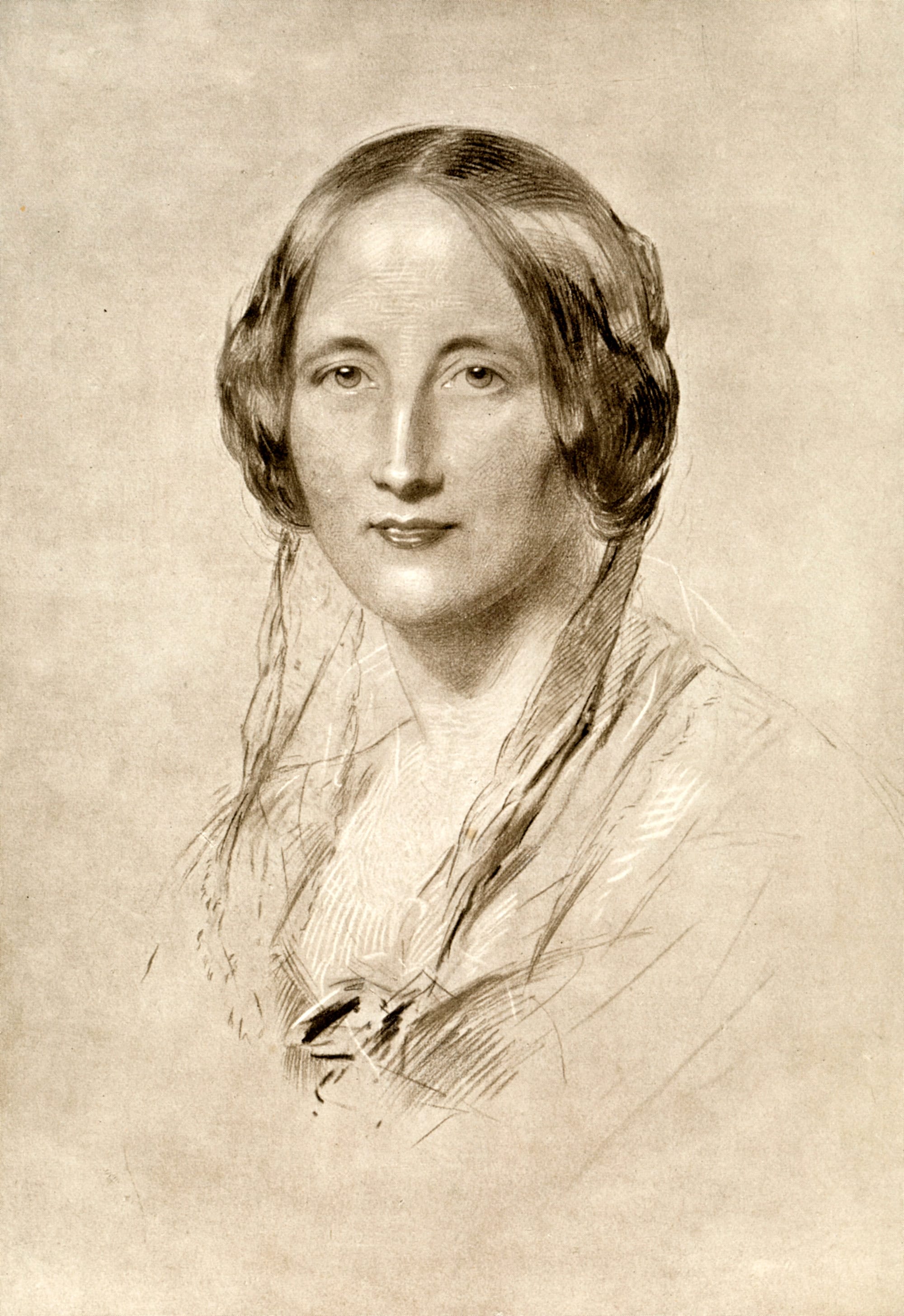
Whilst wage-draining rents, disinterested landlords and a society where only a minority own their home may sound like eerie predictions for life in the not-too-distant future (or on the first two counts, the present), they also reflect Britain’s past. In 1918 it was revealed that just under 25% of the population owned their own home, and for the nineteenth century the figure is thought to be as low as 10%. The Gaskells, and those above and beneath them, were part of a rental-driven society — this was a trend which would not really be reversed until the 1970s. So, how did the well-to-do find somewhere to live in Victorian Manchester?
Where to live?
To call Manchester’s 19th-century growth “rapid” is to traffic in understatement. Between 1773-1851, the population of Manchester and its suburbs rose by 1252% — sit with this for a second, imagine your city multiplying itself over twelve times and all the knock-on effects of this. This urban sprawl meant a small market town became a thriving metropolis in just one single lifetime.
By the 1830s, the wealthy had already fled their central Mancunian townhouses. Rapid industrialisation and the commercialisation of the town centre had made places like St Ann’s Square, Market Street and Deansgate undesirable to the wealthy. More importantly, industrialisation caused the value of land to skyrocket. In 1840, land in Piccadilly was worth 60 times more than it had been in 1790.
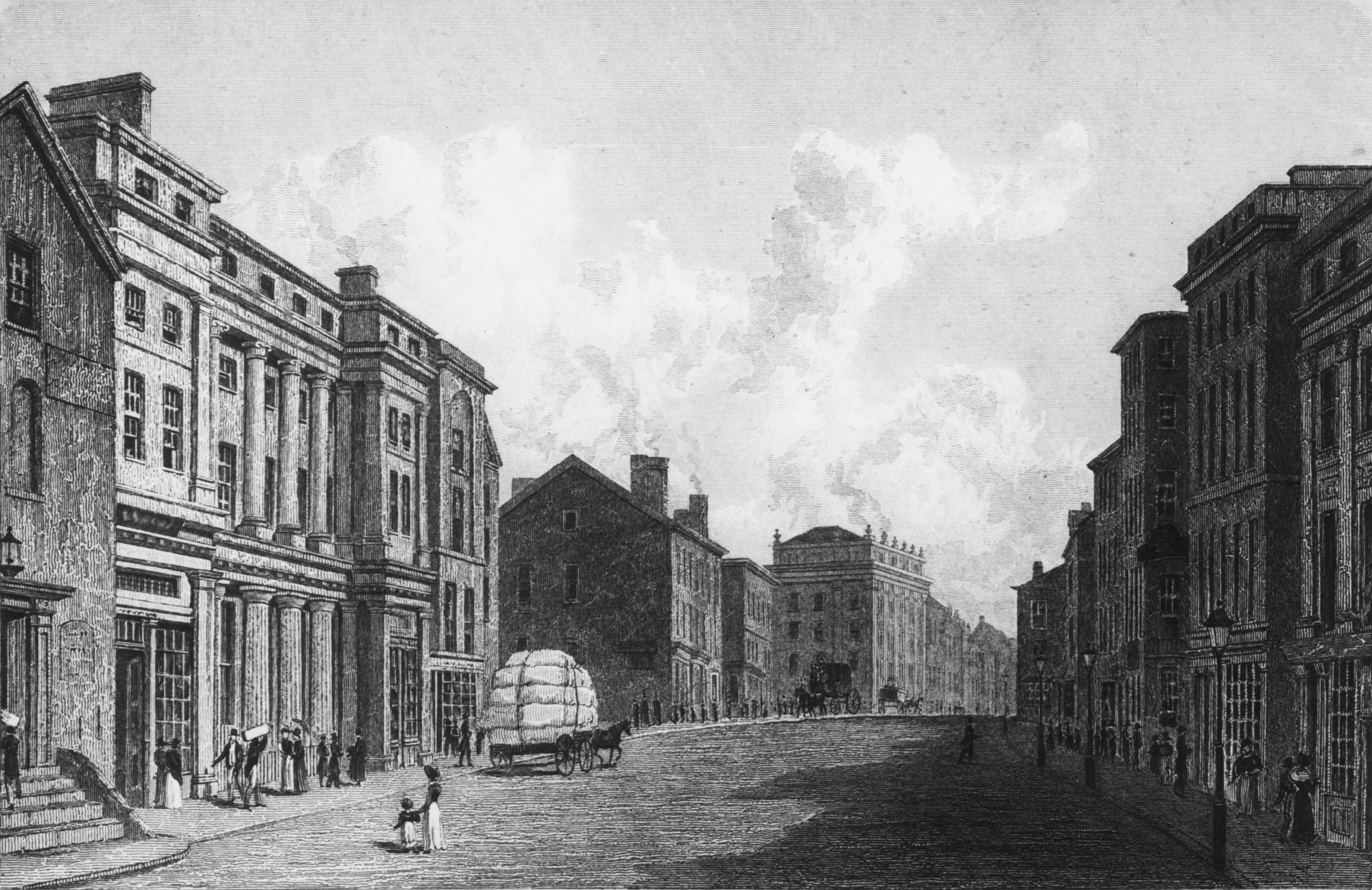
Landlords were quick to use these new circumstances to turn a healthy profit. They could easily convert each floor of a townhouse into a warehouse, and command a higher rent, or buy a few and demolish them altogether. There’s a certain irony in the fact that now, almost 200 years later, landlords and property agents have realised they can wring profits out of the reverse: converting each floor of a warehouse back into multiple flats to bolster the city-centre domestic market.
The wealthy residents of Manchester were not necessarily that bothered about leaving the town centre. The introduction of an omnibus service from 1824 made commuting that little bit easier for men who had to travel for business, and a substantial profit could be made for those few who owned their houses or landlords who could evict their tenants. Richard Cobden wrote about being deemed ‘a clever fellow’ as within months of buying his Mosley Street townhouse in 1832, the value of it had doubled to 6000 guineas. Inequality was rife: the average cotton worker at the time would have had to save his annual salary for 57 years to afford it.
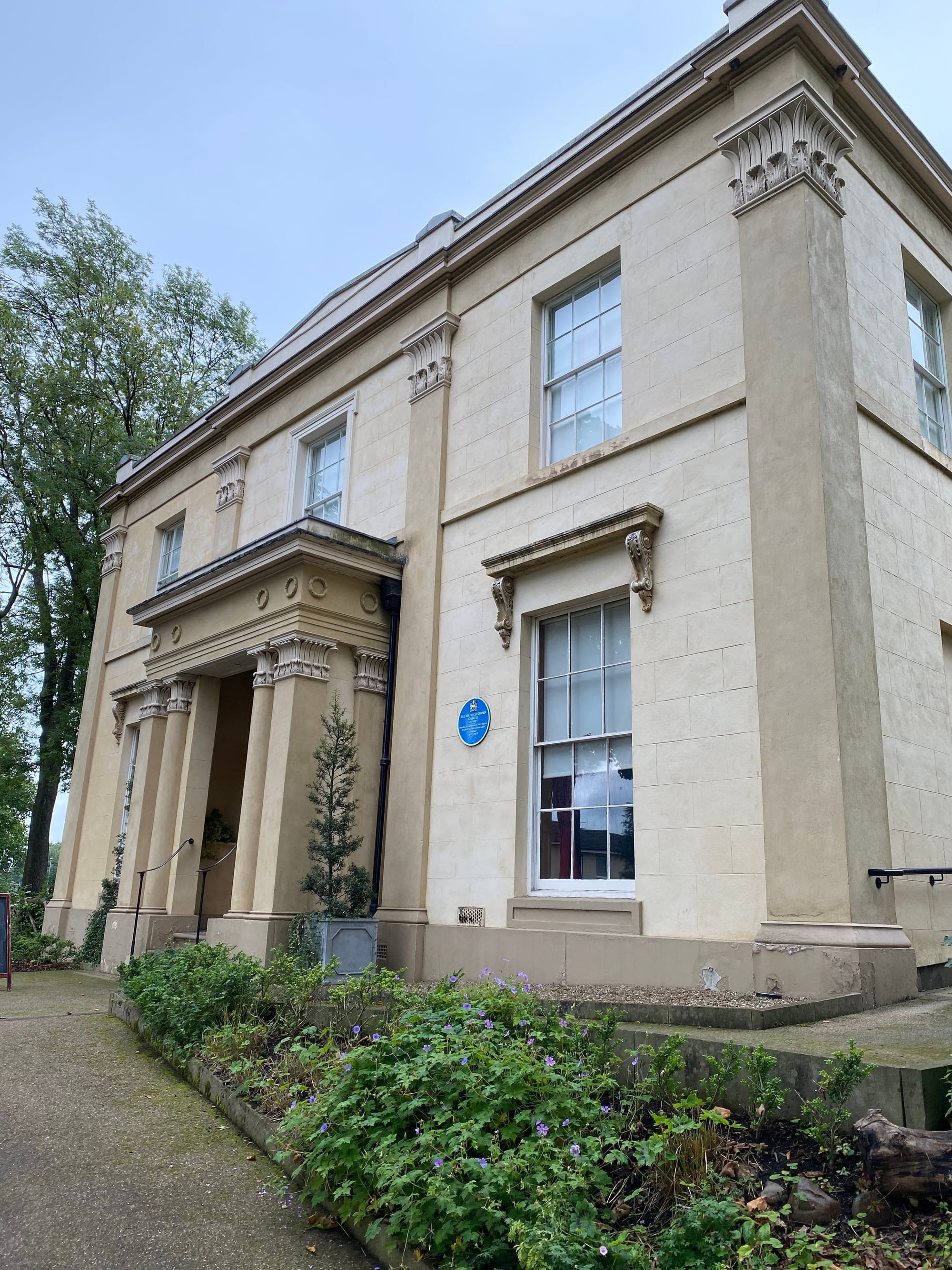
Notions of status and respectability were so closely tied with the domestic sphere that it made house-hunting a stressful business. Before moving to Plymouth Grove, the Gaskells had moved twice, and each house was that little bit better than the last. Between 1832-1842 they lived in a smart terrace at 14 Dover Street. Like all their neighbours there, they rented their house at £50 per annum. Their growing family meant a move to a semi-detached house round the corner, 112 Upper Rumford Street, costing £65 a year. This larger house, with its higher rent, was a status symbol to the Gaskells’ neighbours that they were moving up in the world. It’s almost impossible to imagine this area, now at the heart of the University district, as it was in 1849 when Elizabeth wrote “we look into fields from some of our windows […] in which the children can see cows milked and hay made in the summertime.”
Plymouth Grove itself fell victim to its own success. In 1851, there were 74 houses dotted amongst large gardens and open pastoral land. Only 12 were owner-occupied and the rest were let to tenants. The Gaskells’ landlord, William Occleshaw, held something of a monopoly as he owned 19 houses, including his own. The build-to-let craze hit Plymouth Grove within a few years of the Gaskells arriving, and by 1861 a further 20 tenant-occupied houses had been constructed. The buoyancy of the middle-class rental market transformed the area from semi-rural into suburban. Of course, this came at a cost. In 1868, Elizabeth’s daughter lamented that “for the simple but sad reason that Plymouth Grove and any-thing ‘country-like’ are not to be found near together.”

The further the wealthy travelled to escape Manchester, the further they pushed into the surrounding countryside, displacing and disrupting the working-class inhabitants. The privatisation of public space was perhaps most evident in the Victoria Park development in Rusholme. By the 1850s Victoria Park, a private, gated-community, covered one-fifth of Rusholme. It had gas lighting, paved streets and the residents of the Park even employed their own police constable. Plus, non-residents had to pay a toll to enter the estate. All of which served as tangible reminders of the class divide and enforced the sense of a closed community.
Unfortunately, monopolisation of public spaces isn’t exactly ancient history. In August 2022, developers in Salford were granted permission to close a 300-year-old riverside footpath along the Irwell, diverting the population away from the river completely. Just as in the 1850s, the popularity of a residential development might be ascribed to the privacy offered by it and the sense of elitism residents derive from this.
Choosing a suitable house
Given the prevalence of renting, properties were more or less continually available. Word of mouth and newspaper advertisements were the main ways in which tenants could house-hunt and by the latter decades of the nineteenth century, these advertisements became more consistent in their style. They stated what the annual or monthly rent was and they used words like “commodious” or “genteel” to entice the reader, along with descriptions of the room sizes, amenities and occasionally, who the neighbours were.
Viewing open houses was the only way in which prospective tenants could actually see a property and have a good nosey at the interior. If they liked what they saw, there was a good chance they could actually obtain some of the furniture. Fully furnished houses were rare but auctions of household goods, often held inside the house itself, were common — especially if the tenant had died or someone was downsizing. Multi-millionaire merchant John Owens, whose bequest founded Owens College (now the University of Manchester) loved nothing more than to poke around the auction houses of Manchester and pick up second-hand bargains.
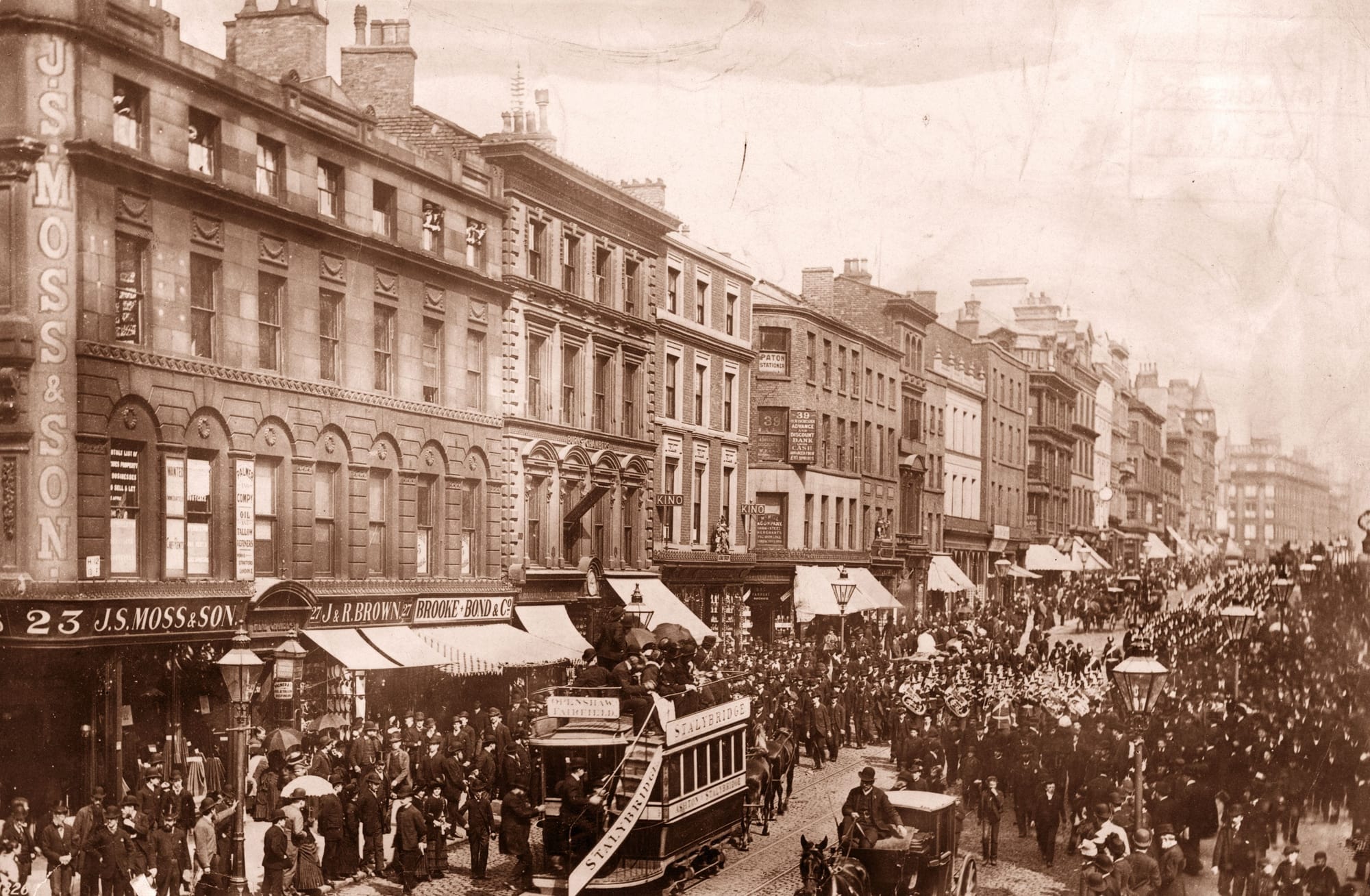
Financial savviness was clearly a keen concern for many middle-class families. As well as the rent, there were taxes on everything from windows and male servants, to carriages, dogs and horses. There was also land tax, police rates, poor law rates and highway rates which would be calculated based on the location and size of the house. Tenants would then have to consider servants’ wages, heating, lighting, water supply and other household necessities.
However, the length of their tenancy agreements and leases could at least put their minds at ease, a luxury not granted working-class tenants. Occupation leases, which were fixed-term leases of 7, 14 or 21 years, were offered to the middle and upper classes as they were considered more stable tenants due to their access to better-quality housing and their perceived trustworthiness. As shown in the work of Peter Kemp, a result of this was that the middle classes tended to move less frequently than their working-class counterparts, but when they did move it was over greater distances. These longer leases may have also been responsible for the general longevity of the rental market, as they allowed the tenant to have prolonged control over the interior of the house (which was usually the tenant’s responsibility) and thereby allowing them to make a house into a home.
Who had the power? Tenant vs. Landlord
Although the house the Gaskells moved into was just over a decade old in 1850 it lacked ‘modern’ amenities that similar properties had at the time. There was no gas lighting nor a plumbed water supply, and these were services the tenants were expected to install themselves. There were also ongoing problems with the drains, and this was the reason the previous tenants had left the house. Much to Elizabeth’s dismay and embarrassment, the foul stench eventually wafted its way into the drawing room, where it was commented upon.
There was little the Gaskells could do but attempt to fix the problem themselves. Although their landlord had lived opposite them, upon his death all his property was inherited by the executors of his estate and the Gaskells were left with absentee landlords. Then, as now, there were acrimonious relationships between many landlords and tenants across the country, regardless of class or status. The book Plain Advice to Landlords, tenants etc. was first published in 1828 and within seven years it had sold 6000 copies. It was still being published over 20 years later as frustrated individuals attempted to work out who was responsible or right or wrong in their disputes.
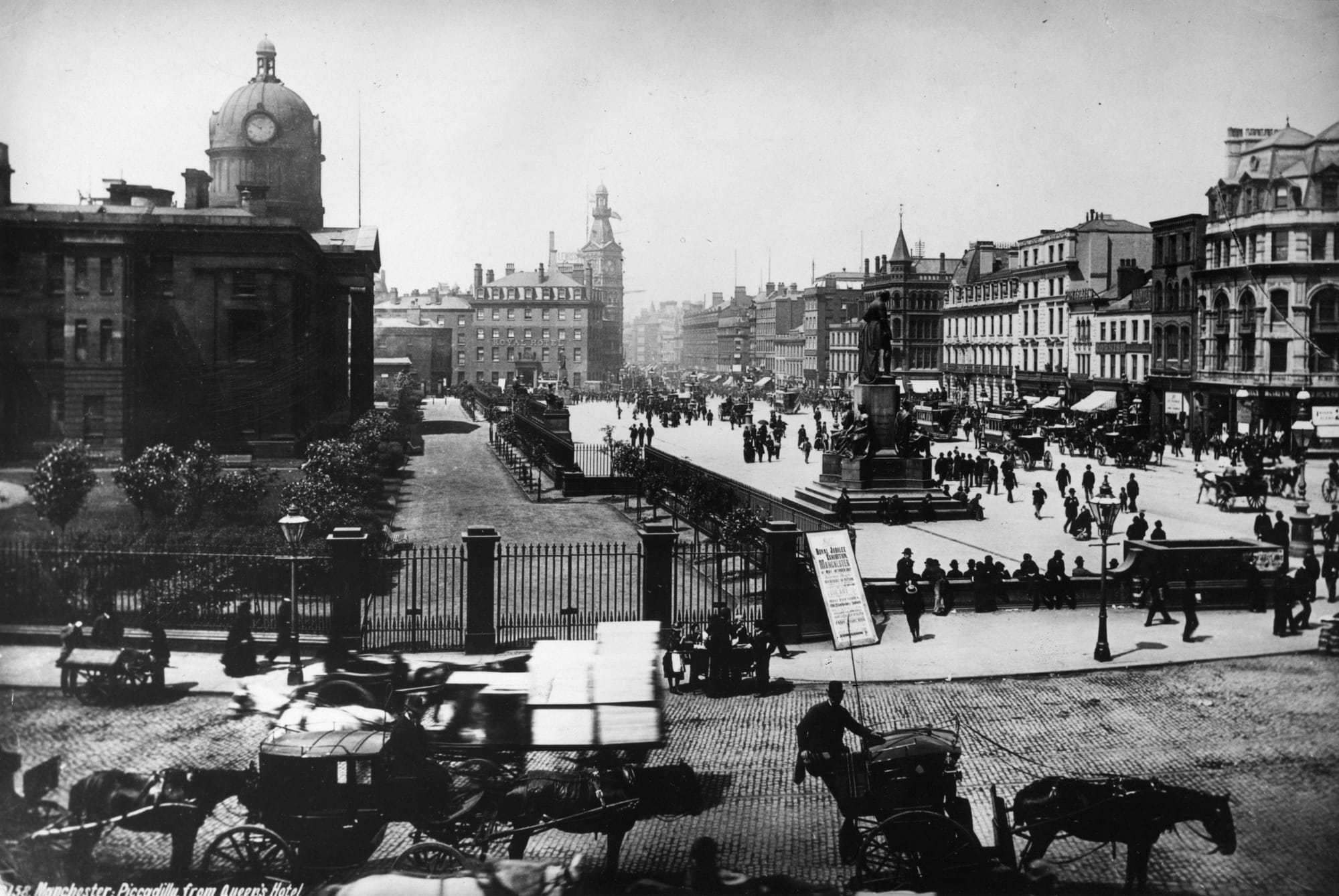
Even being middle-class didn’t guarantee protection against the whims of your landlord. In 1840, Mr Dunnett was four years into his lease on a large house in Rusholme, when the owner, Mr Holford, informed him that the annual rent had risen from £50 to £70 and Dunnett could either pay more or move out. After giving up his lease Dunnett found out that Holford had actually offered the house to a new tenant for just £58 a year, to which he stated “very well I’m damned if Mr Holford shall have the benefits of my improvements” and commenced removing all the features he had added to the house, including dismantling a conservatory, cutting away fences and gates, and digging up a line of rhododendrons. Holford took Dunnett to court claiming £100 in damages, but the courts were wary of Holford, a somewhat notorious landlord among his 300 tenants, and Dunnett was fined just £10, though he was still left with the problem of finding a new home.
Change for tenants only came when the government began to take a more active involvement in housing conditions. State interventions in the form of the Rent Control Act of 1915 prevented greedy landlords from exploiting the families of men fighting during the First World War, and for the first time it highlighted the plight of many tenants on a national scale. Slum clearances and the development of social housing alongside building societies, more accessible mortgages and post-war house building eventually changed the balance.
However, the swinging pendulum of owning vs. renting is now changing direction. It seems as though the 21st century will more closely mirror the 19th in terms of the housing crisis. The Office of National Statistics reported that home ownership fell for the first time in a century between 2001-2011, whilst private rentals increased. No doubt this trend will continue when the statistical data from the 2021 census is released in the coming years.
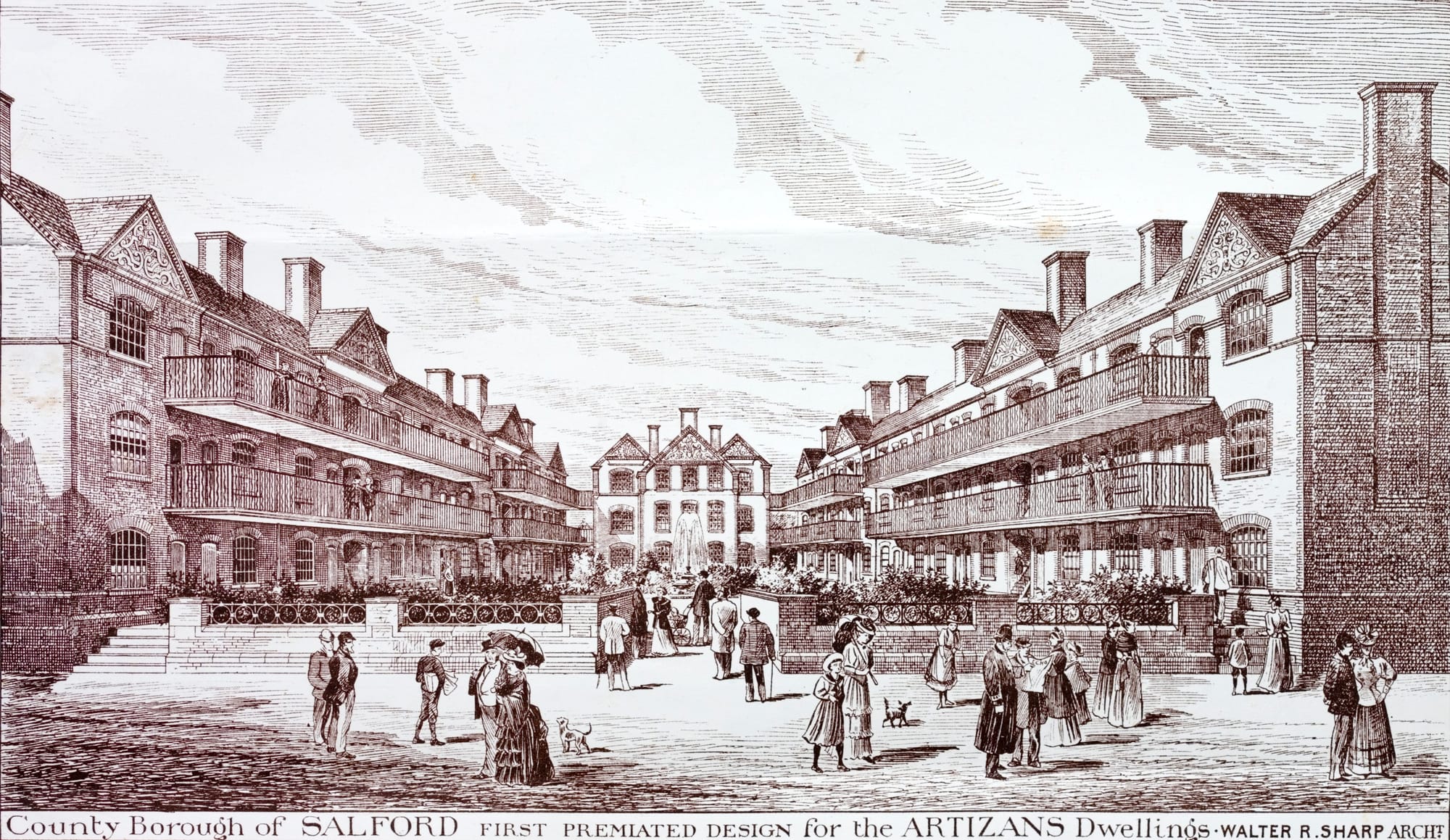
We don’t need a crystal ball and a talent for divination to know this — those of us based in Manchester and Salford need only look around us. The rental market is booming, and almost every scrap of land has flats thrown up on it, with the city centre being most popular: the population of Deansgate and Piccadilly wards alone increased by 185% between 2004 and 2019.
The suburbs have not escaped, and they are easily going through their fourth or fifth cycle of ‘regeneration’ in the years since Gaskell knew them, and just like in Gaskell’s time, renting in these choicest locations will become an expensive investment. According to the Manchester Evening News rents in Manchester have risen by over 23% in the last year alone, and the BBC recently reported that over a third of all renters aged 18-59 are paying over 30% of their earnings on rent. Over 170 years might separate us from Elizabeth Gaskell’s house hunting days, but we are connected across time by our ruinous rents.
After living in the house as tenants for more than 50 years, Elizabeth and William Gaskell’s daughters purchased their home on Plymouth Grove in January 1900. Today, Elizabeth Gaskell’s House has been lovingly restored to its mid-nineteenth century glory and it is open to the public as a museum. It is definitely worth a visit. For more info: https://elizabethgaskellhouse.co.uk/visit/

Comments
How to comment:
If you are already a member,
click here to sign in
and leave a comment.
If you aren't a member,
sign up here
to be able to leave a comment.
To add your photo, click here to create a profile on Gravatar.






